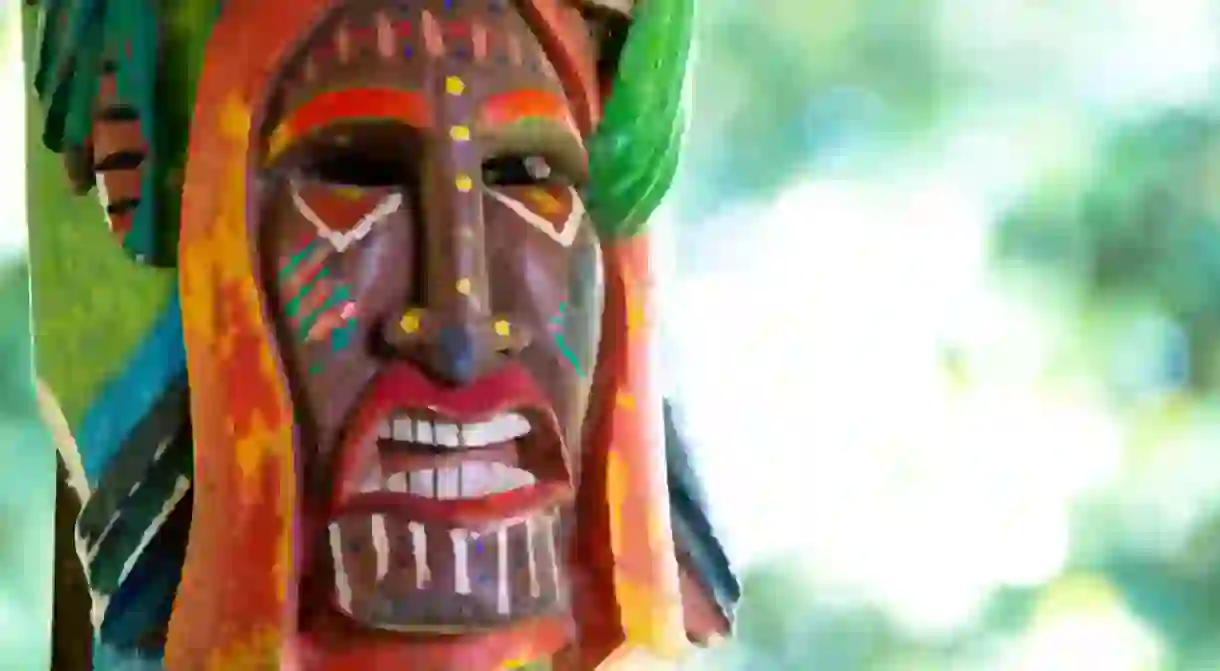A Brief Introduction to the Indigenous Tribes of Costa Rica

Before the arrival of the Spanish conquistadores, Costa Rica – like other countries in Central and South America – was entirely populated by indigenous tribes. Prior to 1502, between 400,000 and 500,000 native people lived in Costa Rica in distinct cultural groups, spread out throughout the country. It is thought that at one point there were as many as 25 tribes. The various indigenous tribes seemed to be influenced by the Mesoamerican civilizations of north Central America, or Macro-Chibcha civilizations of northern South America.
The first tribes to settle in Costa Rica were hunters and gatherers. As time passed, and experience and knowledge of the land, plants, and animals developed, tribes became more organized, civilized, and sophisticated. Groups became more permanently based and stable communities were formed. It wasn’t until the Spanish conquistadores arrived that many of the tribes retreated to the deep jungles of Costa Rica for safety.

Tribes of Macro-Chibcha ethnic origin
There are five tribes that have been traced back to Macro-Chibcha origin, which is mainly from the northern region of South America, including the Amazon. The Guaymíes, Cabécares, Bribris, Térrabas, and Borucas tribes all emigrated to Costa Rica from the south. Today these tribes are still present in Costa Rica, but in much smaller numbers. Unfortunately, as seems to be a common story, many of the indigenous people were run out of their territories, enslaved, or died from foreign diseases.
Borucas tribe
The indigenous Borucas people of Costa Rica are still deeply rooted to their ancestral traditions. They are well known for their annual Fiesta de los Diablitos, which is a festival to celebrate their resistance and cultural survival against the conquistadores. During the festival, a performance of the devils (the Indians) verses the bull (the Spanish conquistadores) is staged. The Borucas make beautiful and detailed wooden masks for the festival and metaphorical reenactment.
Cabécares tribe
There are around 10,000 members of the Cabécares tribe still present in Costa Rica. The tribe continues to speak their native language and practice their traditional medicine and way of life. The cacique (the chief) of the tribe is permitted to marry several wives, as this tribe is a patrimonial culture. This tight knit tribe are proud farmers of cocoa, coffee, and bananas, as well as fisherman and bird hunters. This is one of the tribes that you can visit on an indigenous tribe tour in Costa Rica.

Tribes of the Mesoamerican ethnic origin
There are three tribes in Costa Rica that are of Mesoamerican descent. The Huetares, Chorotegas, and Guatusos or Malekus tribes all traveled to Costa Rica from the north. These tribes were traced back to indigenous groups from Mexico and Guatemala, such as the Mayans and Aztecs.
Chorotegas tribe
The Chorotegas are the largest and most developed tribal group in Costa Rica. They are excellent farmers and produce crops such as cotton, cacao, corn, and beans. They are also well known for their ceramics, which can be purchased when visiting Costa Rica. Typically, the women are the artisans and they create beautiful pieces that depict native animals of Costa Rica, like the jaguar and crocodile. The Chorotegas were known in pre-Colombia times for human sacrifices.
Guatusos tribe
This tribe, sometimes also called the Malekus tribe, are one of the smallest indigenous tribes in Costa Rica. Unfortunately, the majority of their land no longer belongs to them. There is also a very high rate of unemployment and inter-culture mingling. They still make traditional ceramics and art, and also grow crops and keep bees. One thing that the tribe is trying to hold on to is their native language. In Guatusos schools, both Spanish and Maleku are taught to students.

Take a tour of an indigenous tribe
One of the best ways to learn about the culture, traditions, art, and way of life of the indigenous tribes of Costa Rica is by visiting one of the reserves and taking a tour through the community. This is one of the ways that some of the tribes earn an income as well as have the opportunity to share their traditions that they have worked so hard for hundreds of years to preserve. The most common tours involve visiting the Bribri, Cabécare, Maleku, or Boruca tribes, but other tribes have tours available as well.













